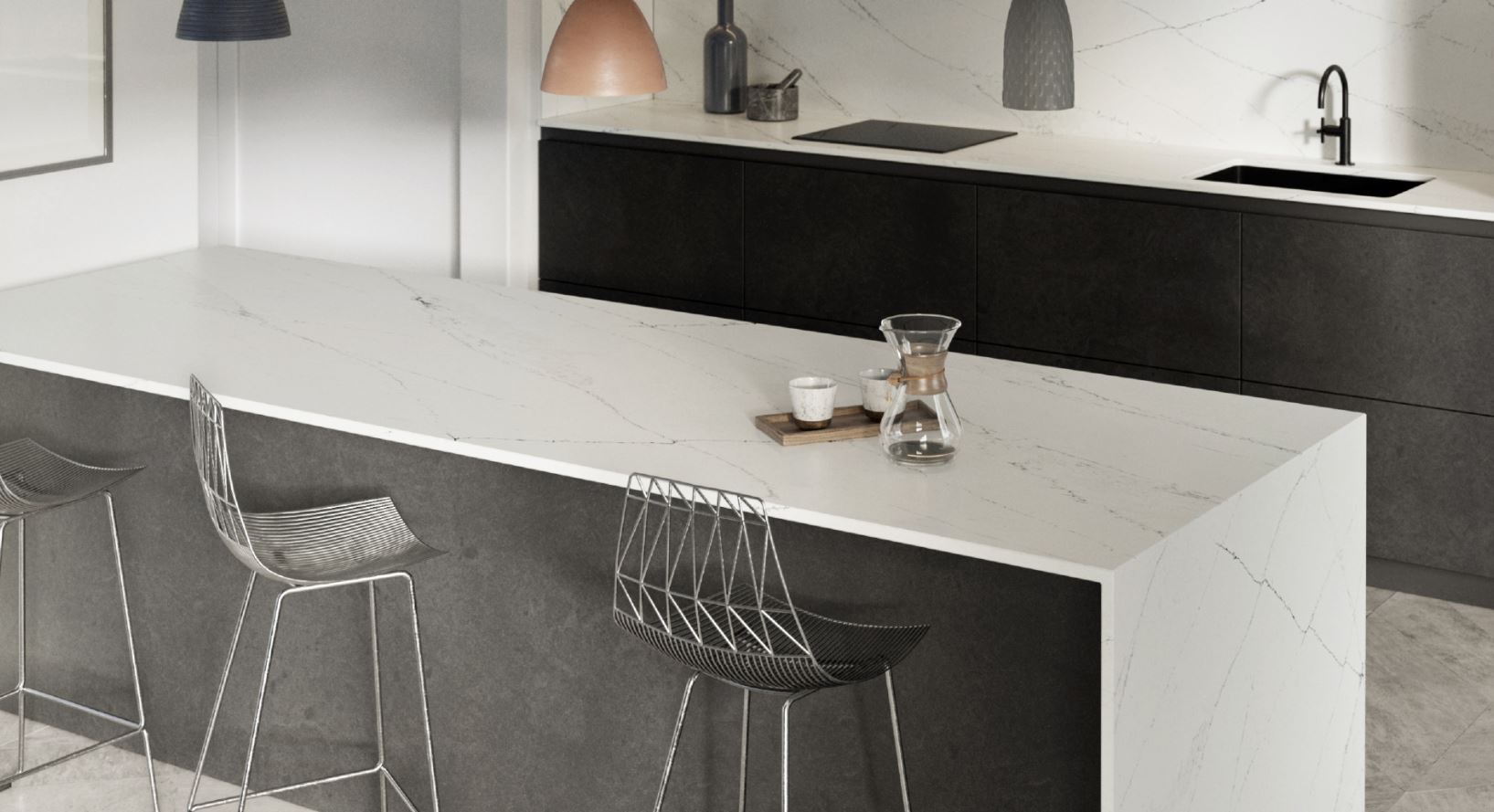Worktop design: 4 easy ways to enhance style and practicality
Stone and acrylic worktops are not only the most durable types of worktops on the market, but they also come in a wide variety of colours, finishes and patterns. And this gives you the opportunity to create a unique look for your kitchen.
But what’s even better is, they’re easily customisable in ways that enrich both their look and their functionality.
In this blog, we look at 4 easy ways a stone or acrylic worktop design can be enhanced to make your kitchen more beautiful and practical.
Upstands
An upstand is an extra, narrow strip of worktop that’s installed on the wall above the main worktop. Although the two worktop pieces are separate, when joined together, they look like one piece. Giving the impression that the worktop has been turned up the wall.
From an aesthetics point of view, upstands create a seamless, finished look. They cut off the sharp corner at the back of the base cabinets and soften the overall look of the room. You’ll be amazed at the difference they can make to your kitchen.
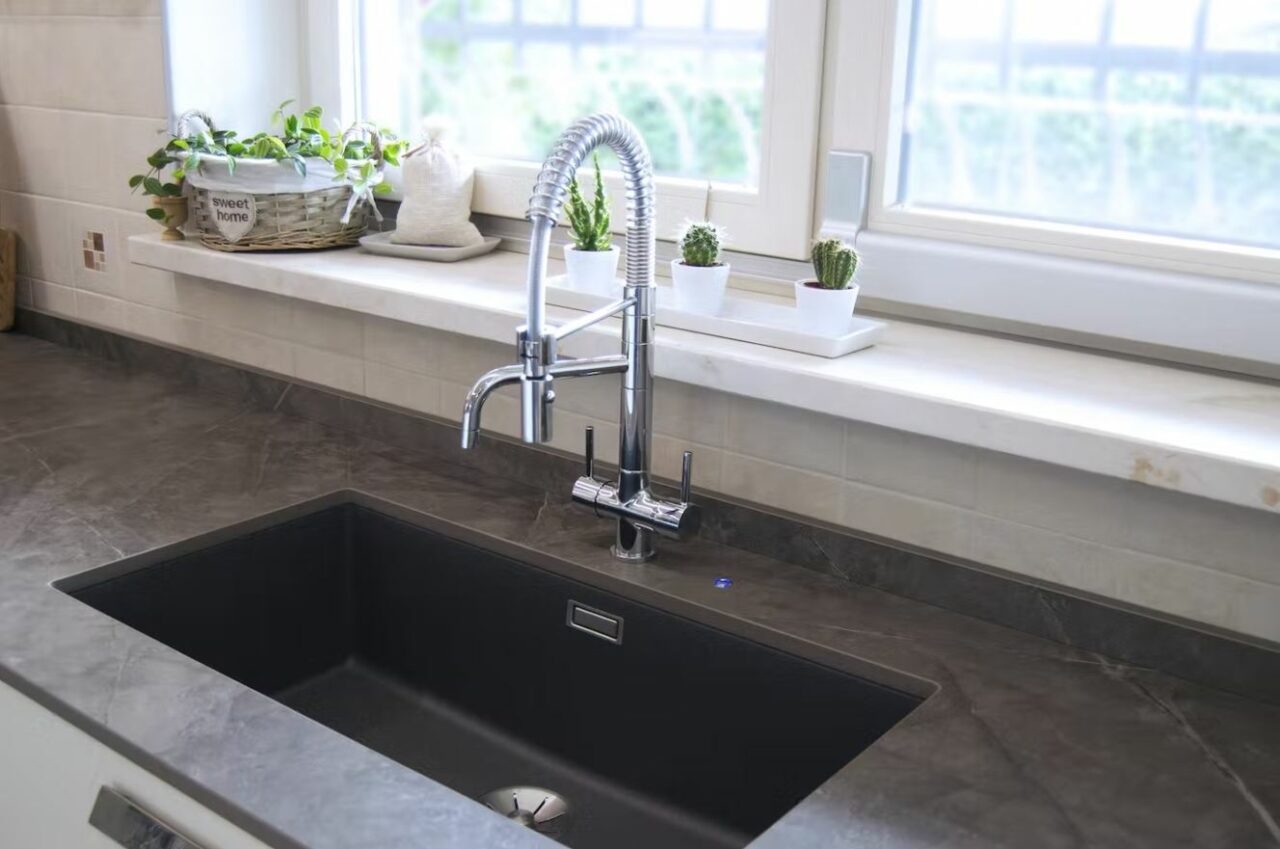
They’re also a great option if you have uneven walls. Without an upstand, if your wall isn’t level, there will be gaps at the back of your worktop. The only other way to hide the gaps is to use a sealant, which can look unsightly. But if you install an upstand, the gaps disappear as the two pieces of worktop overlap.
From a practical point of view, the overlapped worktop and upstand provides a seal, stopping any liquids from escaping down behind the kitchen units.
Upstands also give the lower part of walls some defence from food splashes. But as they’re usually only around 60 – 150mm tall, their protection is limited. So, when planning your kitchen worktop design using upstands, think about how you’ll protect the rest of the wall. You might not need to cover every wall. Just the areas where it’s most needed, such as behind the hob and sink. You could use tiles or a splashback.
Splashbacks
A splashback is very similar to an upstand – it’s a panel of worktop that’s installed on the wall above the main worktop. However, it’s much taller than an upstand. It covers the whole wall between the base and wall cabinets. And it can go higher to fit above a hob too.
From a style perspective, splashbacks can add a touch of flair to your worktop design. You can match your splashback to your worktop, but you don’t have to. Instead, you could install a splashback that complements your worktop by choosing colours with similar tones. Or you could go for a complete contrast, such as having a solid colour worktop and a decorative splashback.
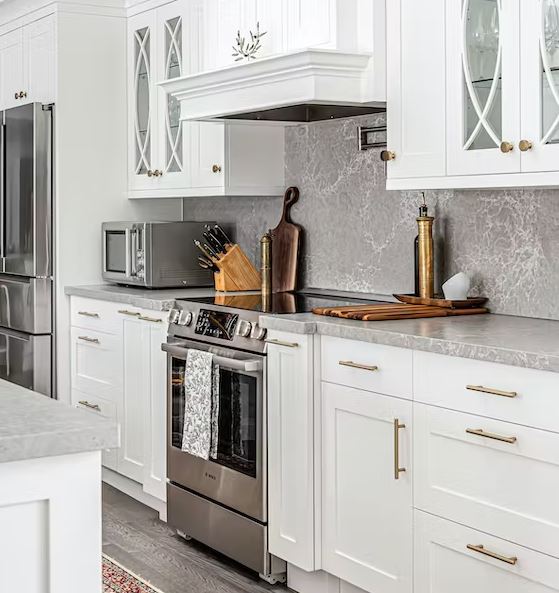
On a practical level, just like upstands, splashbacks hide gaps on uneven walls and create a seal to stops liquids from getting behind the cabinets.
But splashbacks are even more practical than upstands. They protect the whole wall from splashes and hot steam. And when they do get dirty, they can be wiped clean very easily.
When choosing a splashback, be careful to choose one that’s a stain-proof material, such as sintered stone, quartz or acrylic.
Drainer grooves and recess drainers
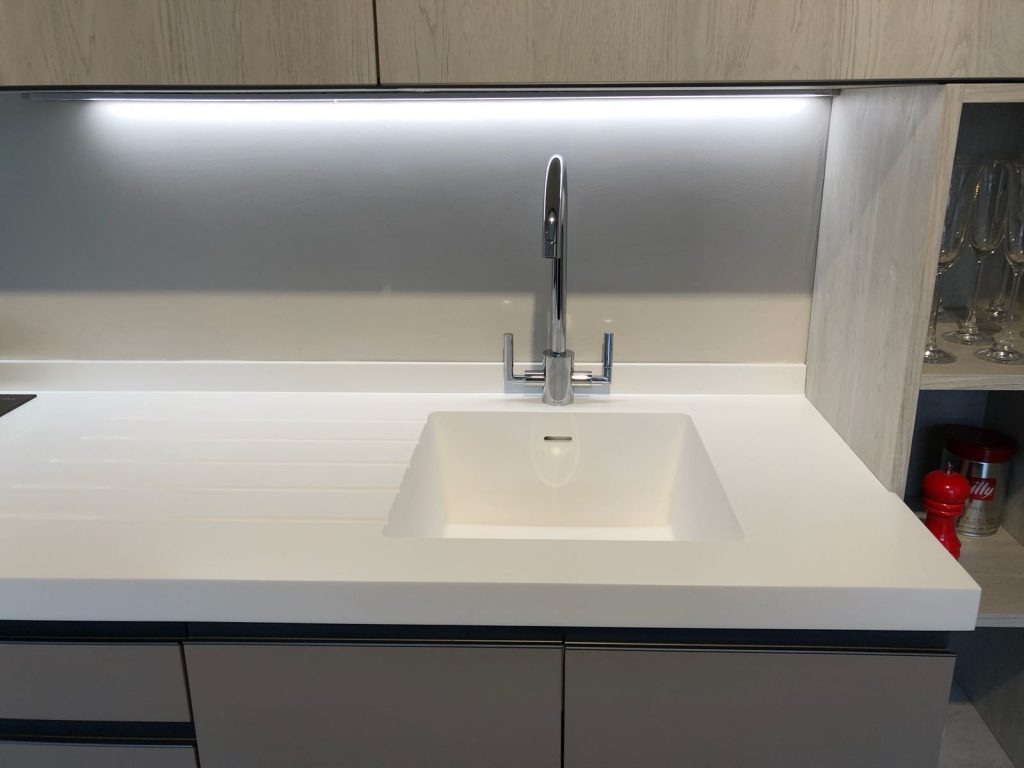
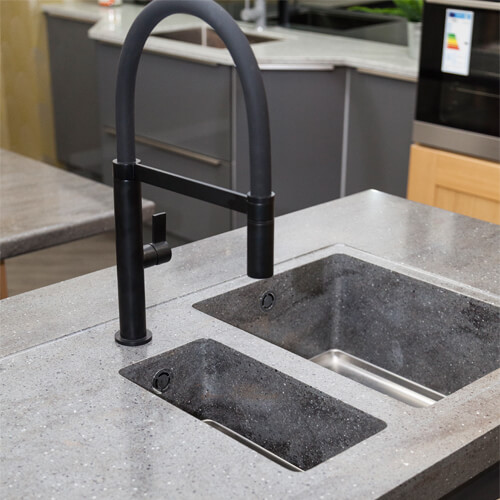
Drainer grooves are narrow flutes that are carved out of a stone or acrylic worktop next to an undermount sink.
A recessed drainer is where the whole draining area is carved out of the worktop to look like it’s sunk into the surface.
The benefits of drainer grooves and recessed drainers are far more aesthetical than functional. Because an undermount sink sits below the work surface, and the draining area is integral to the worktop, they’re more subtle on the eye than a standard sink and drainer combo. They allow the whole sink area to blend seamlessly into the rest of the kitchen to look tidy and sleek.
But we have to be honest. Water doesn’t drain away quite as easily as it does on a traditional draining board. However, it’s easy to wipe excess water into the sink. Plus, you have the benefit of not having any annoying nooks and crannies where dirt and limescale can quickly build up. And, if you use a dishwasher most of the time anyway, then the draining might not be an issue for you.
Pop-up sockets
Pop-up sockets are exactly as the name suggests. A bank of plug sockets that pop-up out of your worktop when you need them and push back down inside the worktop when you don’t.
Usually, plug sockets are located on walls. But when you have an island in the middle of your kitchen, a wall socket isn’t convenient. If you want to plug in your food mixer, for example, it would be dangerous to trail the cable across the aisle to plug it in. So, pop-up sockets offer a practical solution.
And they improve your kitchen from an aesthetical perspective too, because, let’s face it, plug sockets aren’t the most attractive things to look at. So, being able to hide them away when you don’t need them is really handy.
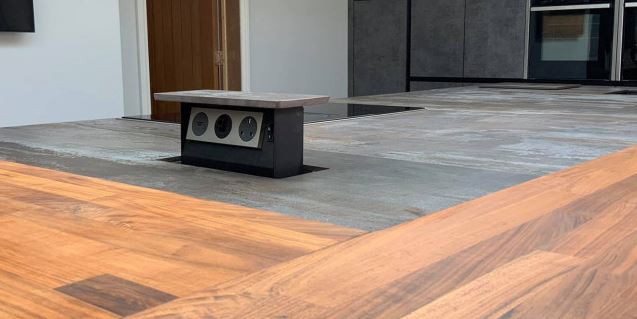
In summary
These four worktop design ideas are simple, yet they can make your kitchen more practical. And they’ll add the extra bit of style you need to make your room look ultra-impressive.
For more inspiration, check out our worktop ideas: 12 designs for a stunning kitchen.
You can get all of these customisations to a stone worktop at SEH Interiors. We have a huge selection of sintered stone, quartz and acrylic worktops to choose from.
Browse our range now.

